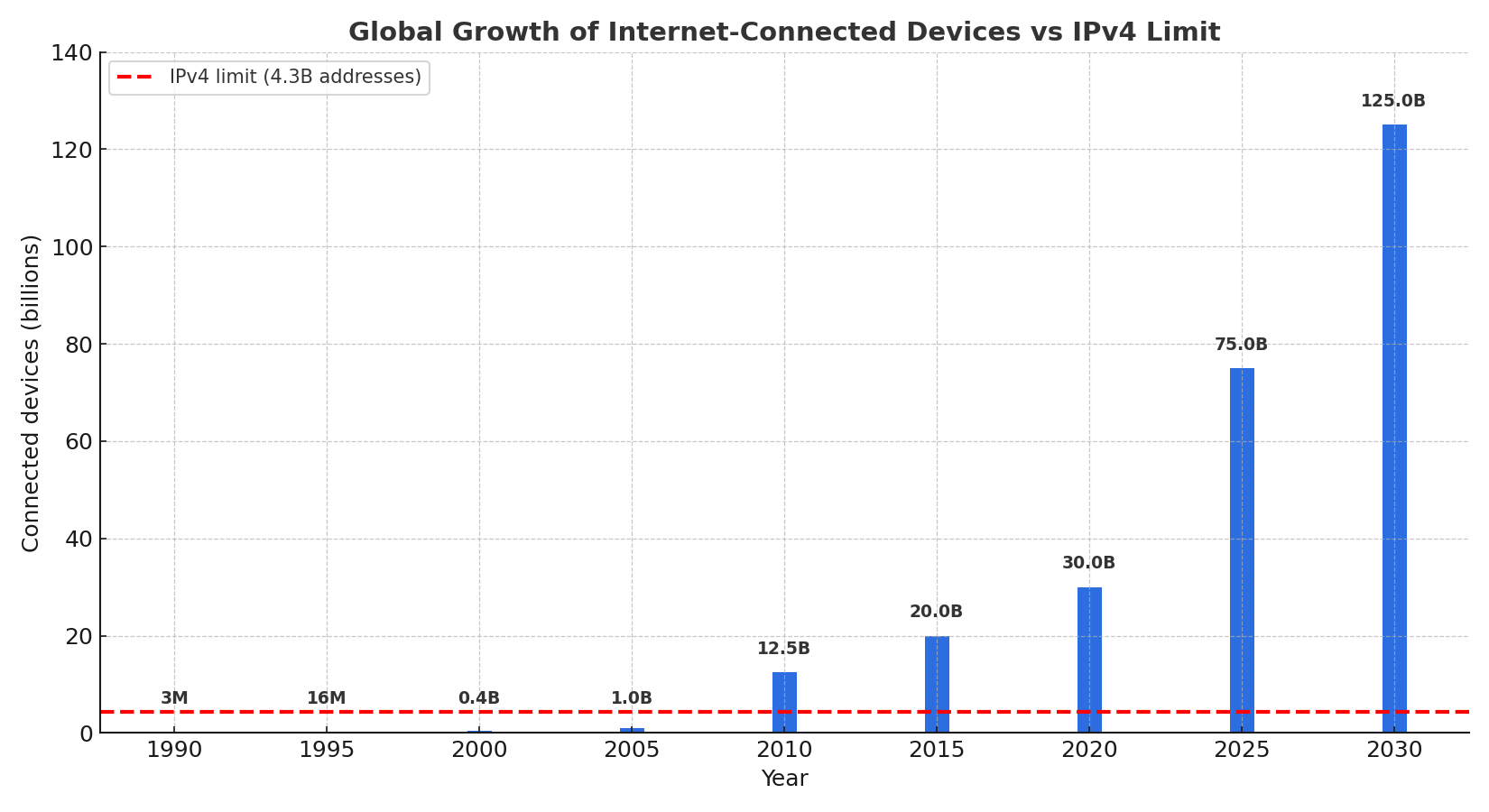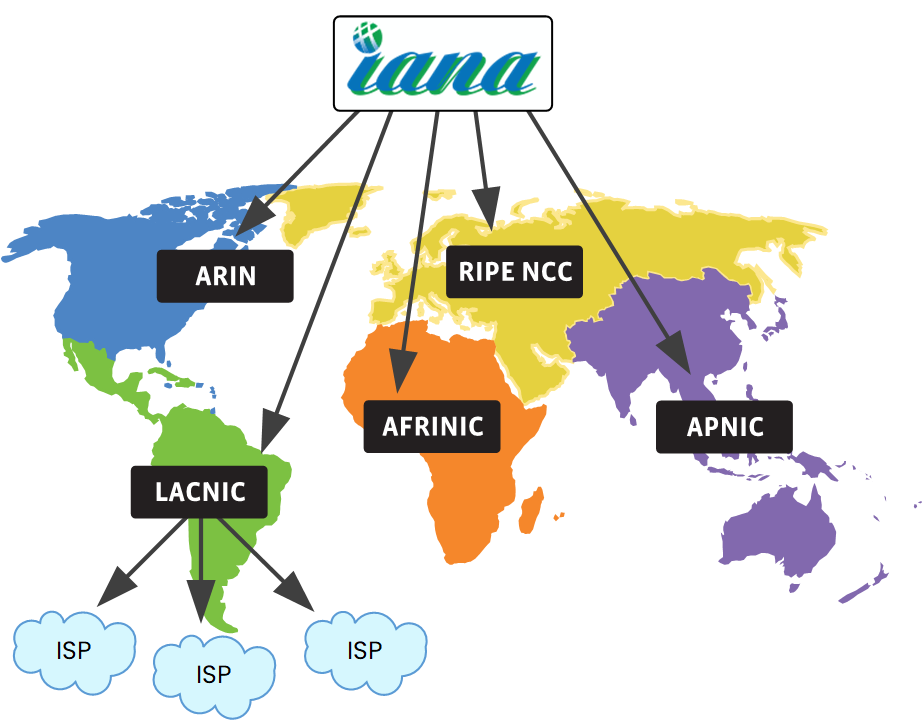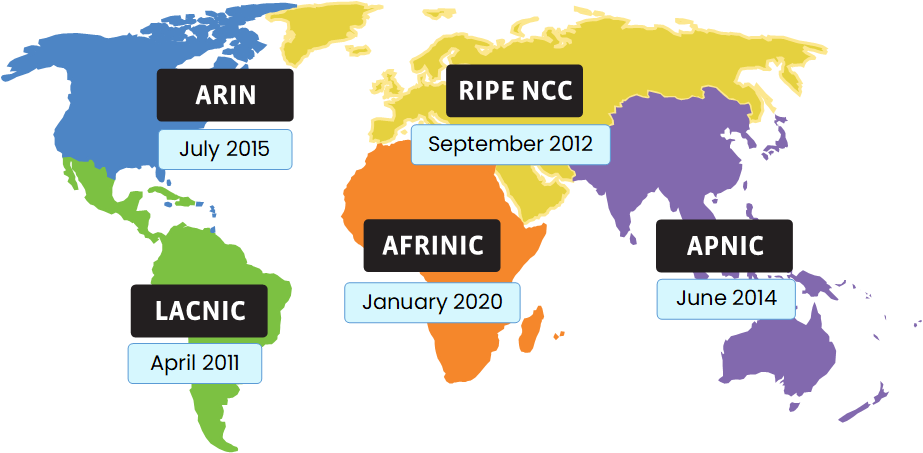As a future network engineer, you must understand IPv6, not just because it is another type of IP address, but because IPv6 is designed to replace IPv4 and ensure the Internet can keep growing.
The rapid increase in the number of connected devices around the world has made it clear that IPv4 alone is no longer sufficient to support this growth.
Back in 1990, only about 3 million devices were online. Today, with the rise of smartphones, cloud services, and the Internet of Things (IoT), there are now over 75 billion connected devices, far surpassing the limits of IPv4.
Figure 1 – Devices quickly surpass IPv4’s 4.3B address limit
IPv4 addresses are based on 32 bits, which allows for a maximum of about 4.3 billion unique addresses. At first, that seemed enormous in the 1980s and 1990s.
But as the Internet expanded, the number of devices needing addresses grew far beyond that limit. By 2010, the number of connected devices worldwide was already more than three times higher than the total number of available IPv4 addresses.
IPv6 was created to permanently resolve the address shortage while also introducing important improvements over IPv4.
Before diving deeper into IPv6, let’s review how IPv4 addresses were allocated and why they eventually ran out.
Answer the question below
Why was IPv6 created?
In the early 1980s, the IANA (Internet Assigned Numbers Authority) was directly responsible for distributing IPv4 addresses to universities, companies, and government institutions. At that time, the Internet was still small, so this centralized system worked wel
By the early 1990s, however, the Internet had grown massively. A more efficient and fair method was needed, which led to the creation of the Regional Internet Registries (RIRs).
The Rise of RIRs
The establishment of RIRs decentralized the process, dividing responsibility across different parts of the world:
APNIC – Asia-Pacific
RIPE NCC – Europe, Middle East, Central Asia
ARIN – North America
LACNIC – Latin America, Caribbean
AFRINIC – Africa

Figure 2 – IPv4 address allocation hierarchy
Here’s how the system worked:
The IANA maintained control of the global IPv4 pool.
Large blocks of addresses were allocated to the RIRs.
Each RIR distributed smaller blocks to ISPs and large organizations.
ISPs then assigned addresses to companies and end users.
This structure made allocation more organized and sustainable for a while. But as Internet growth continued, engineers had to develop new techniques to stretch the limited IPv4 space.
Techniques to Stretch IPv4
Originally, IPv4 used classful addressing (Classes A, B, and C). While simple, this system was inefficient, many addresses were wasted.
To improve efficiency, several solutions were introduced:

Figure 3 - Timeline to IPv6 Standard
In 1993, CIDR (Classless Inter-Domain Routing) and VLSM (Variable Length Subnet Masking)
→ Allowed more flexible subnetting and reduced waste.
In 1994, NAT (Network Address Translation) with private addresses
→ Enabled many devices in a private network to share a single public IPv4 address, greatly slowing down the rate of consumption.
These methods helped extend the life of IPv4, but they only delayed the inevitable.
IPv4 Exhaustion
Despite these techniques, IPv4 exhaustion was unavoidable. Over time, each RIR officially announced the depletion of its IPv4 pool:
Figure 4 - RIR IPv4 Exhaustion Dates
LACNIC → 2011
RIPE NCC → 2012
APNIC → 2014
ARIN → 2015
AFRINIC → 2020
From that moment, the global IPv4 pool was empty. Organizations that still needed IPv4 had to recycle old allocations or buy addresses on the secondary market, a costly and very limited option.
And while optimizations like CIDR reduced waste, the introduction of NAT with private IPv4 addresses came with a heavy price.
Answer the question below
Name one technique introduced in the 1990s to reduce IPv4 waste.
In the mid-1990s, engineers introduced NAT (Network Address Translation) together with the concept of private IPv4 addressing.
The goal was simple: allow many devices in a private network to share a single public IPv4 address. This greatly slowed down the consumption of IPv4 addresses and extended the protocol’s life for several years.
However, NAT broke the original end-to-end communication model of the Internet.
Instead of every device having its own globally unique IP address, NAT forced devices to hide behind a shared address.This introduced several issues:
Applications like VoIP, peer-to-peer, or video conferencing became harder to deploy.
Extra devices and protocols were needed (gateways, proxies, traversal servers).
Complexity and latency increased.
In the end, NAT was only a temporary workaround, not a real solution.
The Internet needed a protocol that could provide enough global addresses for every device and that protocol was IPv6.Answer the question below
In 1998, the IETF introduced IPv6, not only to solve the address shortage but also to modernize the Internet Protocol.
Massive Address Space
IPv4 → 32-bit, about 4.3 billion addresses.
IPv6 → 128-bit, about 340 undecillion addresses (340 × 10³⁶).
IPv4 address space : 4,294,967,296 addresses IPv6 address space : 340,282,366,920,938,463,463,374,607,431,768,211,456 addressesThat’s more than enough for every device on Earth and far more still unused.
To give you an idea of this difference, imagine that a single drop of water represents the entire IPv4 address space. Now compare that to all the water in all the oceans of the planet combined, that’s the IPv6 address pool.
With IPv6, every device can finally have a unique, globally routable address. The Internet’s original end-to-end model is restored.
Advantages of IPv6
IPv6 is not just “IPv4 with more addresses.” It introduces real improvements:
Restores direct end-to-end communication (no more NAT issues).
Built-in security → IPsec is mandatory.
Simpler header → routers process packets faster.
Autoconfiguration (SLAAC) → devices can configure themselves without DHCP.
ICMPv6 improvements (Neighbor Discovery, replacing ARP).
No broadcast → replaced with multicast.
Mobility support → devices can keep their IP while moving networks.
Answer the question below
How many bits does an IPv6 address have?
Introduction to IPv6
IPv6 was designed to replace IPv4 and restore the Internet’s original end-to-end communication model with an almost unlimited address space. In this lesson you will see why it matters for real networks and how it overcomes IPv4’s limitations.
